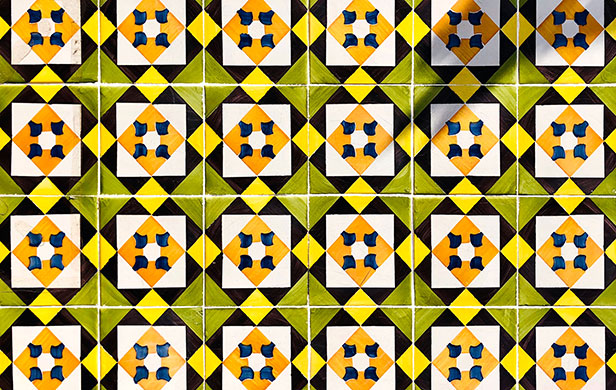BOOMbox at Home: Patterns
January 26, 2021

Patterns have many uses: they can be used by animals like zebras or cheetahs to blend with their surroundings. These animals have patterns in their fur to camouflage themselves from predators. Patterns can help people lessen anxiety through zentangles, art with repeating patterns in it. But what makes a good pattern? Colors, shapes, or perhaps the story behind patterns contribute to their effectiveness.
Zentangles
Zentangles are made up of a repeating pattern inside a border. Much like patterns that can be seen in the wild, zentangles can have variations among them. Even though zebras and other animals have the same pattern, no two patterns are the same. Zentangles are a cross between a mindfulness exercise and art.
People of all ages and abilities can make zentangles at any level. The can make easy works of art or more intense, intricate works of patterns. There is no way to mess up while doing zentangle patterns because they are drawn as they are drawn with no real expectation of what they will be.
Practice making your own zentangles. You can make one main repeating pattern, or you can make multiple patterns to create a collage effect. You can create borders out of simple shapes and fill them in with patterns. Watch an introductory video about zentangles and a drawing challenge from Creativebug (use your Skokie Public Library card to access Creativebug).
Color Theory
A good pattern can come down to the colors used. Have you ever seen a pattern with clashing colors? It can often take away from the pattern if that was not the intent, although clashing colors used correctly can make an eye- catching pattern. When picking colors, try using a color wheel.
Colors are split into three different groups: primary, secondary, and tertiary colors. Primary colors are red, yellow, and blue. These three colors make up all of the rest of the colors of the world. Mixing these colors together creates secondary and tertiary colors. Secondary colors consist of green, orange, and purple. Tertiary colors consist of yellow orange, red-orange, red-purple, blue-purple, blue-green, and yellow-green.
Keeping those colors in mind, how do you pick good colors for patterns? One way is to apply a color theory. Analogous colors are three variations of the same color, such as a light green, a medium green, and a dark green. You can apply color theory to how you color zentangles in creating amazing patterns.
Kente Cloth
The power of patterns and their meaning can be found in the example of kente cloth. Kente cloth originates from the Asante people of the Akan kingdom, which is now a part of Ghana. The true origins of the kente cloth have been lost to time, but the myth of the kente cloth continues. The Asante people tell the story that two hunters came across a spider and were inspired by the spider’s web.
The kente cloth was originally created to be worn in a toga style, but is usually now worn as a sash around the neck. Kente cloth has some main characteristics: colorful threads, repeating shapes, and a name. Some clothes were named after the dreams that inspired their creators, some were named after specific kings, some after events, but each kente cloth pattern has a name. Royals and government officials would commission different patterns and designs to represent lineage, and it is said that Chinese silk would be unspun and woven into these expensive pieces of cloth. What are some stories you can tell with patterns?
Ingredient of the Week
Who knew olives could be so salty and tasty and useful for making patterns? Make fun penguin snacks using olives.
Artist of the Week
Yayoi Kusama is known for her polka-dot sculptures and her infinity art installations during the pop art movement. She was born in 1929 in Matsumoto, Japan. Yayoi has suffered with mental health issues starting in childhood. She speaks of a hallucination of thousands and thousands of flowers surrounding her, which is where she got her inspiration about dots.
As a child, she was discouraged from creating art, yet she never let family and society pressures stop her. She moved to New York in 1958 to be part of the pop art movement of the 1960s, and said that a lot of her art was a coping mechanism to help her mental illness. Yayoi has been nicknamed the “princess of polka dot” because they are found in nearly all of her creations. She uses the dots as a way to "self-obliterate," saying that they are a way to melt into a collective being. Yayoi has had installations at the Tate, Museum of Modern Art, National Museum of Art Tokyo, and many others. She currently lives in a mental health hospital in Japan, where she has been since 1977, located right across the street from her art studio.
Written by Erica.